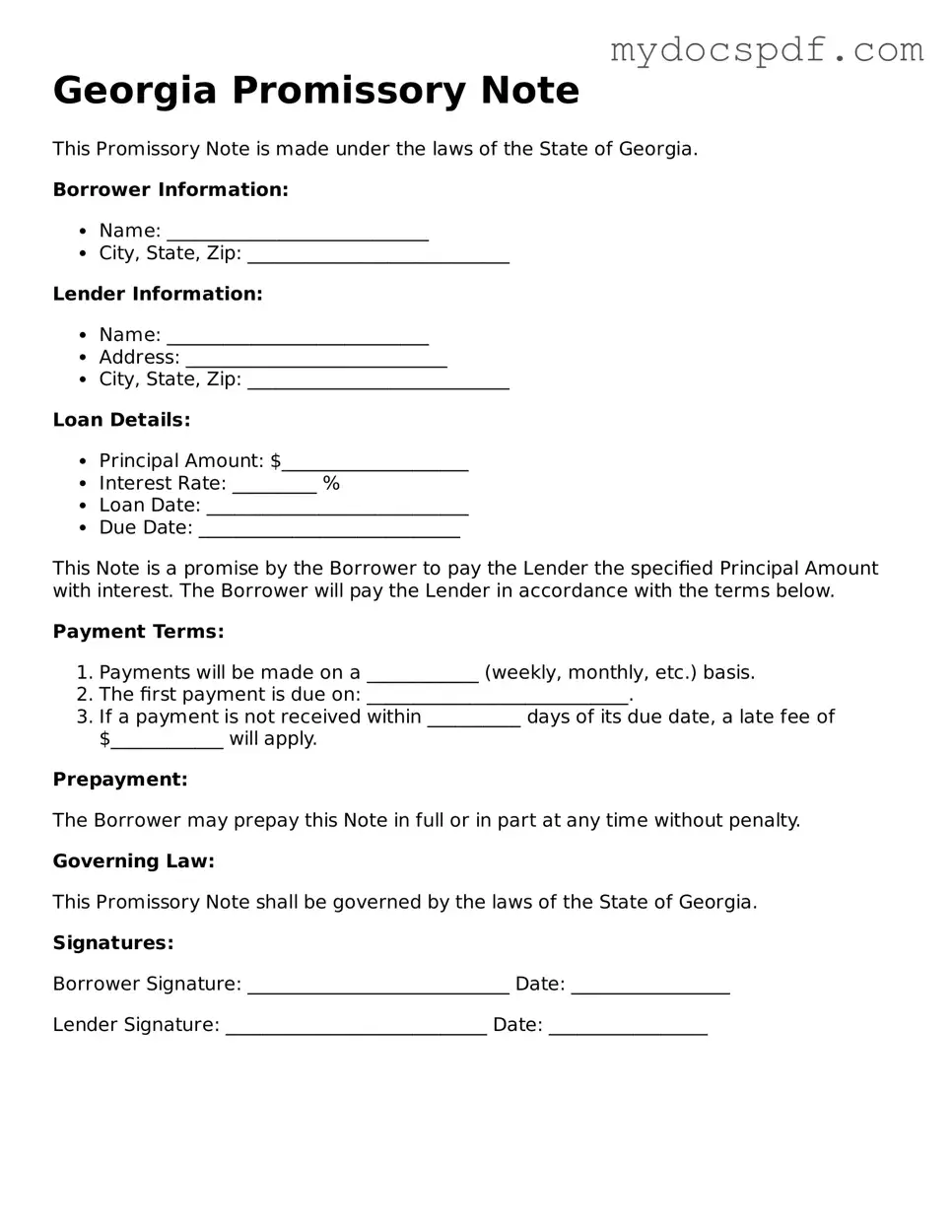Georgia Promissory Note
This Promissory Note is made under the laws of the State of Georgia.
Borrower Information:
- Name: ____________________________
- City, State, Zip: ____________________________
Lender Information:
- Name: ____________________________
- Address: ____________________________
- City, State, Zip: ____________________________
Loan Details:
- Principal Amount: $____________________
- Interest Rate: _________ %
- Loan Date: ____________________________
- Due Date: ____________________________
This Note is a promise by the Borrower to pay the Lender the specified Principal Amount with interest. The Borrower will pay the Lender in accordance with the terms below.
Payment Terms:
- Payments will be made on a ____________ (weekly, monthly, etc.) basis.
- The first payment is due on: ____________________________.
- If a payment is not received within __________ days of its due date, a late fee of $____________ will apply.
Prepayment:
The Borrower may prepay this Note in full or in part at any time without penalty.
Governing Law:
This Promissory Note shall be governed by the laws of the State of Georgia.
Signatures:
Borrower Signature: ____________________________ Date: _________________
Lender Signature: ____________________________ Date: _________________
